But what’s it like to ride the Downeaster? Read on…
First there were speeches to a crowd of over 200 from a raised platform in front of a partially completed, bare plywood shelter.
“Do you realize it has taken longer to get this train here – 13 years – than it took to build the first transcontinental railroad during the Civil War?” asked Bob Hall incredulously.
As chairman of the station committee, he was most likely the guy who had stapled the maroon cardboard “Exeter” sign on the parking lot side of the roof, a quick-thinking response to someone’s last-minute assertion that, “every station, even an unfinished one, needs a sign!”
A high school band played a couple of sprightly tunes to the assembled throng on a dreary, yet warm mid-December Friday, when a little blond-haired boy down near the tracks yelled, “I hear something!” Within seconds a TV station helicopter whooshed overhead and the murmur of townsfolk momentarily grew louder. Then there was a plaintive horn in the foggy distance. Lights started flashing and the gates dropped at the crossing about 1000 feet away where the track comes around a curve.
The crowd hushed. Could this be it? Then the band struck up “America, the Beautiful.” Sure enough, there was the headlight swinging into the open from around the bend leading two silvery locomotives and nine cars – and it was moving, too!
The horn was blaring now, competing with the “amber waves of grain,” and “purple mountain majesties…” as the Downeaster Inaugural Special charged into the New Hampshire town amid cheers, flag waving, music, and a whiff of brake shoe smoke.
Knowing how long it took to make this scene a reality – how many people sacrificed their time and energy; how difficult it is to get the states, Amtrak, a commuter carrier, a freight railroad, and the communities all on the same page – and then seeing the convergence of it all made tears well up in my eyes.
Okay, okay. You had to be there. And when you finally do get a chance to ride the Downeaster between Boston’s North Station and Portland, Maine, it may not be as thrilling as the special’s dramatic entrance into Exeter, or as hectic as sold out trains that followed in the days after.
The June 2002 issue of TRAINS magazine detailed how this unique operation developed, focusing on some of the people who made it happen, and outlined the roles of the train’s Maine-based funding organization, the Northern New England Passenger Rail Authority (NNEPRA), and track owner Pan Am Railways (formerly Guilford Rail System).
But first, let’s take a ride.
The Bad News: Boston
For starters, it’s a problem just getting to the Downeaster from the rest of the nation’s intercity rail system.
The masterminds who are spending billions of federal dollars on Boston’s never-ending “Big Dig” – the subterranean north-south Central Artery highway project – didn’t make room for an adjacent rail link to connect Boston’s two train stations.
Little more than a mile separates South Station, where Amtrak’s Northeast Corridor service terminates, and North Station, which fields MBTA commuter trains to suburbs north of the city and now Amtrak’s Downeaster trains. But try hailing a cab or negotiating Boston’s crowded streets with luggage or children in tow. Originally, Massport (Logan Airport’s operating authority) was going to provide a shuttle, but they pulled their pockets inside out and shrugged.
The best option is to make a connection at the Northeast Corridor’s Back Bay station and use the MBTA’s Orange Line for a one-seat ride. Catch a subway marked “Oak Grove” to go to North Station, or Forrest Hills-bound trains marked “Mattapan” or “Braintree” to reach Back Bay. Allow at least a half hour. There’s more walking at North Station, but it’s located in the Fleet Center complex where the Bruins and Celtics play.
It’s all smiles aboard the Downeaster. A big part of the train’s on-board success are a couple of ideas imported from other corridors.
Car Hosts: Long a success in North Carolina on the Carolinian and Piedmont, each Downeaster train is assigned at least one knowledgeable volunteer from Train Riders Northeast (the organization instrumental in creating awareness and political support in the first place) who greets passengers, explains where the café car is located, and offers transit and hospitality information about intermediate stops along the way.
Playing host on the second southbound trip out of Portland was none other than Wayne Davis, the man whose letter to Amtrak president W. Graham Claytor, Jr., thirteen years ago and tireless efforts since helped launch the service.
“There’s a knack to riding the train, and the conductors are busy taking tickets and getting people on and off. Just having somebody to talk to makes a big difference to many passengers, especially the first-timers,” says Davis. He discovered one couple, Donald and Carole Tubbs, who had traveled on the old B&M to Boston for a quick weekend honeymoon after they got married in Portland 45 years ago.
Regional Flair in the Café: Seasoned train travelers will be amazed to learn that the Downeaster’s café car is open before the train leaves the station.
The snack bar is stocked with regional fare freshly prepared by Portland’s Epicurean Feast caterer. This is the same kind of arrangement used by the state of Washington and Amtrak West for the Cascades. Some unusual offerings are a Portabella mushroom sandwich on rosemary foccacia, and a turkey and Havarti dill cheese wrap.
“We sold out of Legal Seafood’s Clam Chowder,” explained lead attendant Pearl Hatch to a customer who was ordering lunch only ten minutes before the train’s arrival in North Station arrival. Very little was left after the train got back to Portland on the first afternoon. “We put so much food on here this morning. I can’t believe it’s all gone,” she mused.
Aside from training runs and an Amtrak safety class in Boston, this was the first test for Hatch and fellow café car attendants Dawn Rogers and Susan Maxell, who had never worked or ridden on a train before.
Coastal Club Business Class: The three café car attendants also offer newspapers and beverages to passengers in the adjacent business class section. With its 1-and-2 leg rest seating, Coastal Club Business Class is exactly like riding in Metroliner First Class, except that you have to get your own food. Still, you get much more for your money than the step-up to Business Class on other trains.
Technically, only the front 18 seats of the car are for Coastal Club passengers, but the seating to the rear of the snack bar is 2-and-1 as well. So unless they expand the premium service to the whole car, it may be possible to sit in the back with a coach ticket.
Critics may look at the Downeaster and claim the train doesn’t go fast enough. An Atlanta Journal-Constitution editorial even sniffed that the fares were too cheap, “guaranteeing red ink” (as if that city’s MARTA transit system has a prayer of ever breaking even). Nevertheless, Republican Senators Olympia Snowe and Susan Collins have been solidly behind the Downeaster from the beginning, because it has grass-roots support and provides public transportation utility that has been sorely lacking along this route.
Since its launch, business has been so brisk that an additional coach was permanently added to one trainset, with another coach on standby should bookings warrant additional seats. The people of New England have a well-crafted rail corridor that provides a real alternative to I-93, I-95 and downtown Boston congestion, as well as the promise of economic development to the towns it serves. It’s an operation other regions should study.
- Runs from Portland, Maine’s combined Amtrak/transit/Concord Trailways station to Boston North Station.
- Stops at Woburn and Haverhill, Mass.; Exeter, Durham and Dover, N.H.; and Wells and Saco-Biddeford, Maine. The Durham stop (Univ. of N.H.) is Friday-Sunday only; an additional Maine stop at Old Orchard Beach is summer only.
- Four round trips daily using two equipment sets
- Running times of 2 hours, 30 minutes for the 116-mile trip
- Routing is via MBTA’s Lowell commuter line, the Wildcat branch to MBTA’s Haverhill/Reading line, and then Guilford’s Boston & Maine freight line to Portland
- Each train carries three or four 60-seat Amfleet I Acela Regional-type coaches (subject to demand) and an ex-Metroliner “full club” Coastal Class car with 2-1 seating and a snack bar for all passengers
- Motive power is supplied by a P40 Genesis locomotive on the north with a former F40 cab-baggage unit on the south operating push-pull. Both equipment sets wind up in Portland each night and are serviced there, where a spare coach is also kept.
- One-way end-point fares vary from $17 to $21, depending on restrictions.
- Trains are reserved, but you can usually get on at the unstaffed intermediate stations. For fares, schedules, and booking visit www.amtrak.com or 1-800-USA-RAIL. The service has its own web site as well, www.thedowneaster.com.





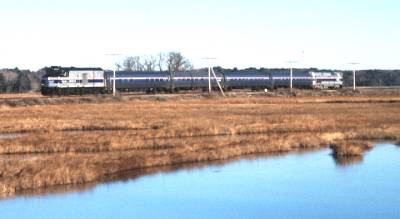
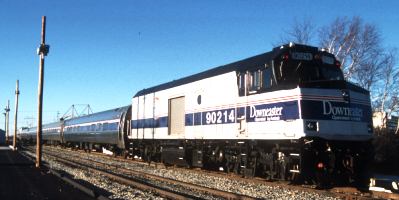

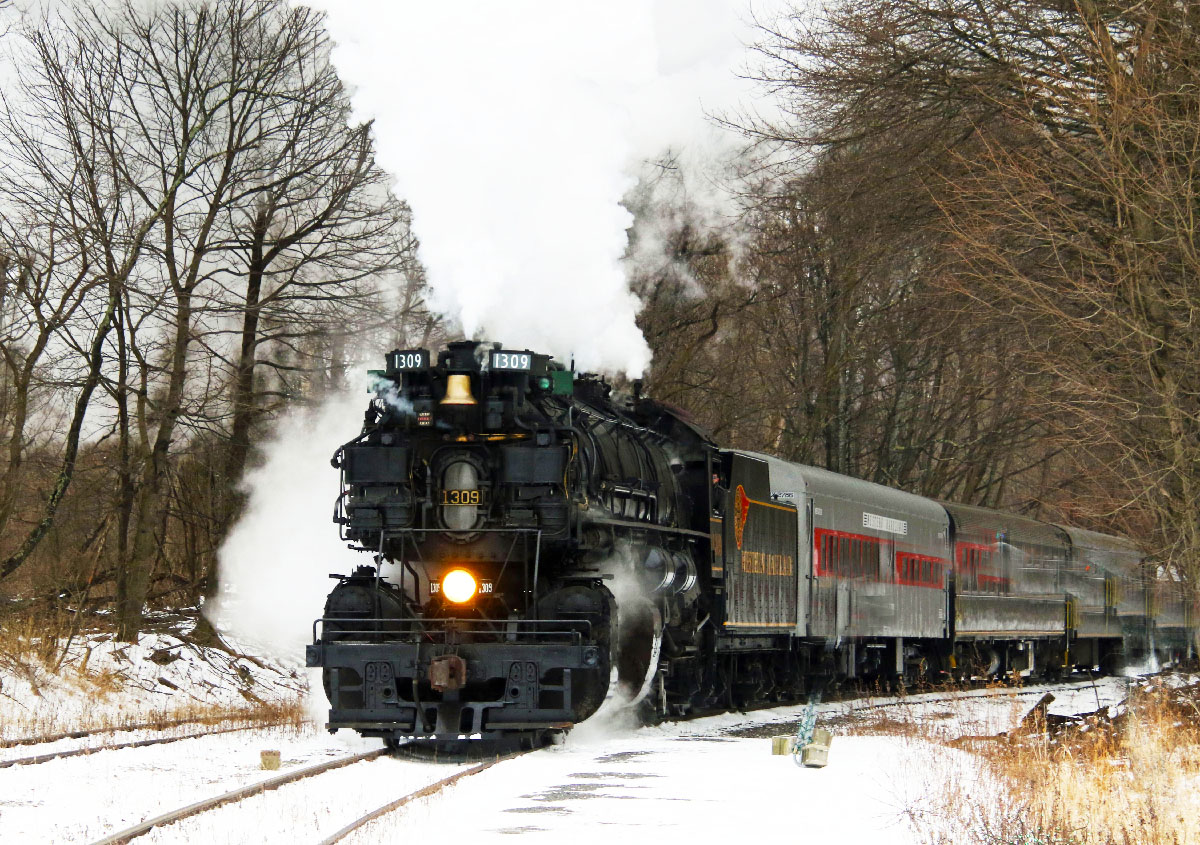
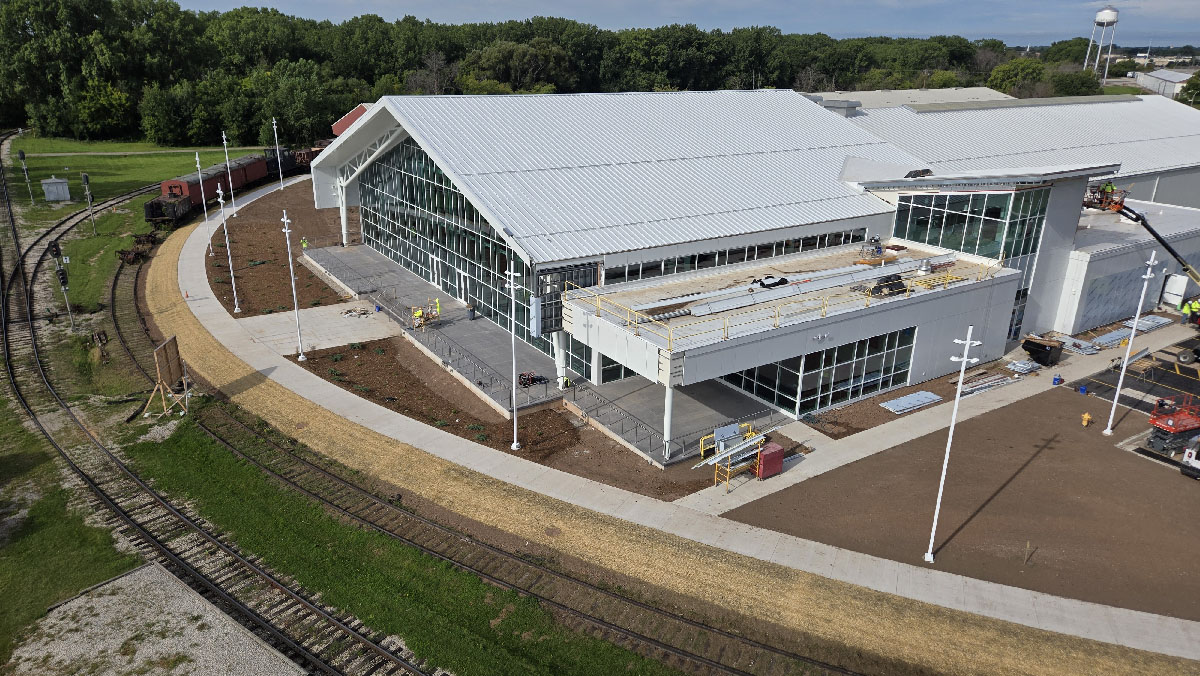
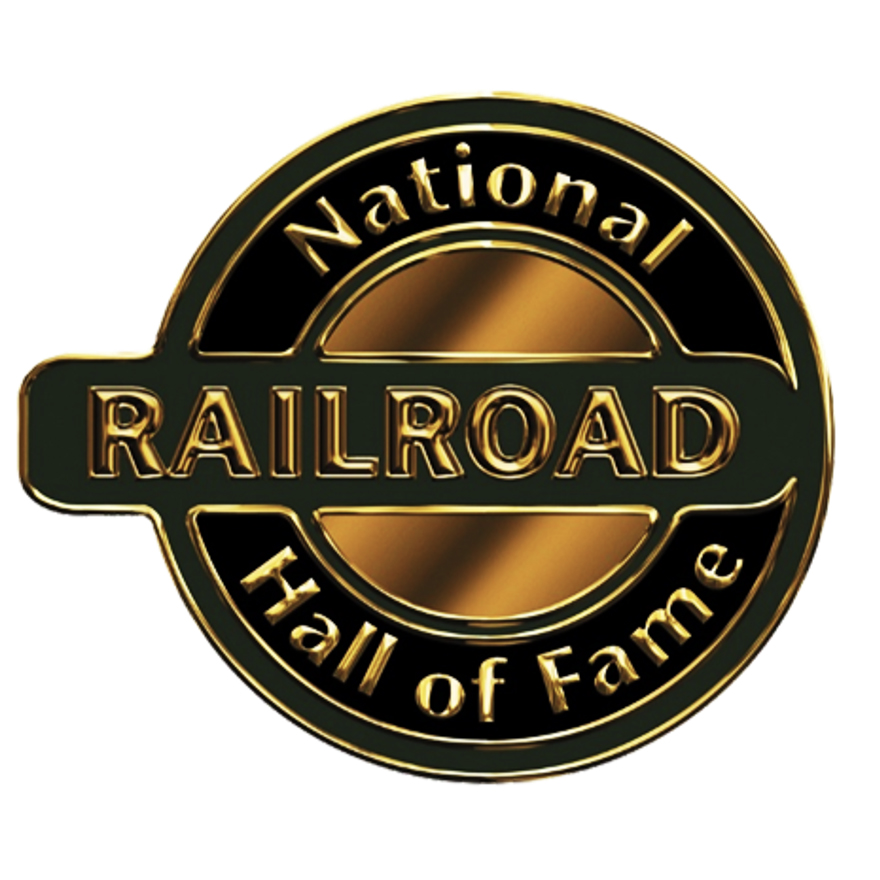
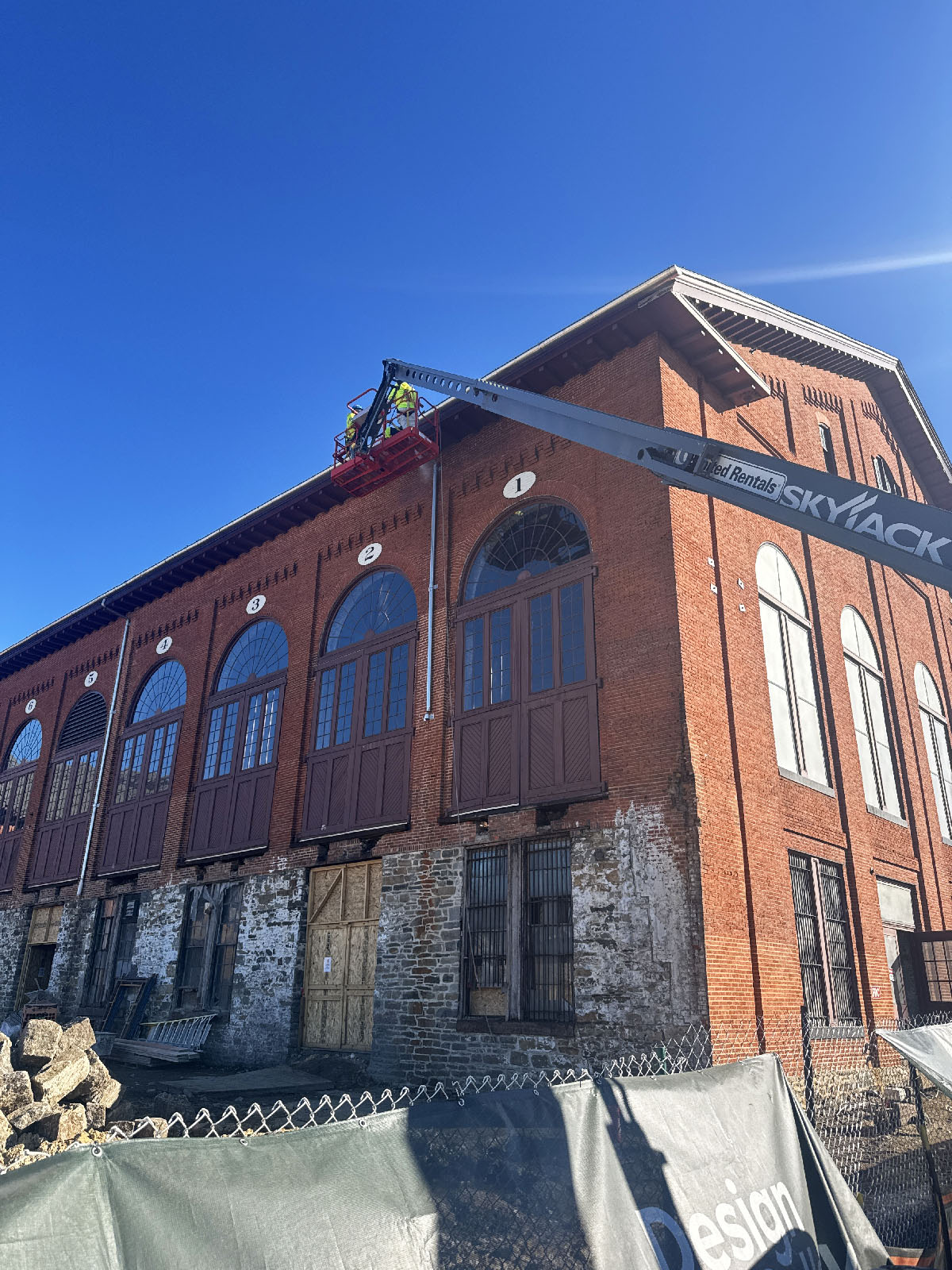




I would like to have bob Johnston e-mail me concerning the re-route of the Texas Eagle, Chicago-St. Louis over the C&EI May 16-23. I don’t know how else to contact him.